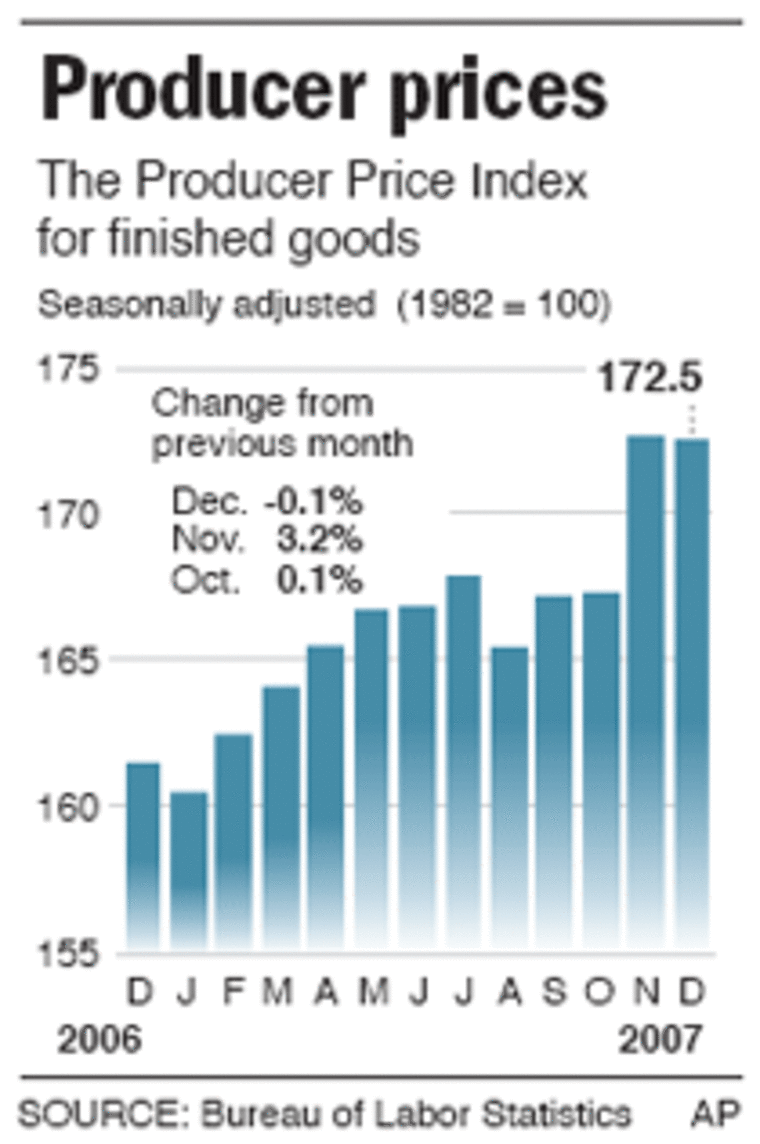Wholesale inflation last year shot up by the largest amount in 26 years while retailers suffered their worst December shopping season in five years as mounting economic woes caused consumers to put away their wallets.
The Labor Department reported that wholesale inflation was up 6.3 percent for all of 2007, reflecting a huge increase for the year in various types of energy costs ranging from gasoline to home heating oil.
Meanwhile, retail sales fell by 0.4 percent in December, the worst showing in six months, the Commerce Department reported. Consumer confidence has plunged, reflecting the worsening housing slump and a lingering credit crisis.
In a third report, the government said that inventories held by businesses rose by 0.4 percent in November, reflecting big increases in stockpiles held by manufacturers and wholesalers. The 0.4 percent rise matched a similar increase in September and was in line with expectations. Inventories had risen by a much smaller 0.1 percent in October.
For inflation, the year ended on a more positive note with wholesale prices falling by 0.1 percent in December. That reflected decreasing costs last month for gasoline and other energy products. It was a significant slowdown after prices had soared by 3.2 percent in November, which had been the biggest one-month increase in 34 years.
The combination of rising inflation pressures and a weak economy represent a dilemma for the Federal Reserve over whether to cut rates to boost economic growth even at the risk of making inflation worse.
Federal Reserve Chairman Ben Bernanke last week sent a strong signal that the Fed is more worried at the moment about weak growth than inflation — given a series of weaker-than-expected data in recent weeks. He is certain to quizzed on those comments when he testifies Thursday before the House Budget Committee.
The economy skidded to a virtual standstill in the final three months of last year, raising fears the country could fall into a recession, unable to withstand the multiple blows from the prolonged downturn in housing, a severe credit crisis and soaring energy costs.
Already, unemployment is rising. The jobless rate jumped to 5 percent in December, up from 4.7 percent in November. That was the biggest one-month surge in unemployment since October 2001 in the wake of the 2001 terrorist attacks.

The various economic threats have sent consumer confidence plunging and pushed the economy to the top of voters’ concerns. Political leaders have responded, with President Bush, Democrats in Congress and presidential candidates from both parties putting forward economic stimulus proposals.
The 6.3 percent increase in the Producer Price Index, which measures cost pressures before they reach the consumer, followed a much more moderate 1.1 percent increase in 2006.
It was the biggest annual price gain since a 6.3 percent rise in 1981, a year when the Federal Reserve was aggressively raising interest rates in a successful effort to combat a decade-long bout of stagflation, rising inflation in conjunction with weak economic growth.
The big increase last year reflected the fact that energy prices rose by 18.4 percent after having declined by 2 percent in 2006. It was the biggest annual increase in energy costs at the wholesale level since they rose by 23.9 percent in 2005.
However, core inflation, which excludes energy and food, was considerably more moderate, rising by 2 percent last year, the same as in 2006. The Fed is closely watching core prices for any signs that the price pressures being seen in energy and food are starting to spread to other parts of the economy.
For December, the 0.1 percent drop in overall prices reflected a 1.9 percent plunge in energy and a 1.3 percent rise in food costs. Outside of food and energy, core inflation posted a moderate 0.2 percent increase.